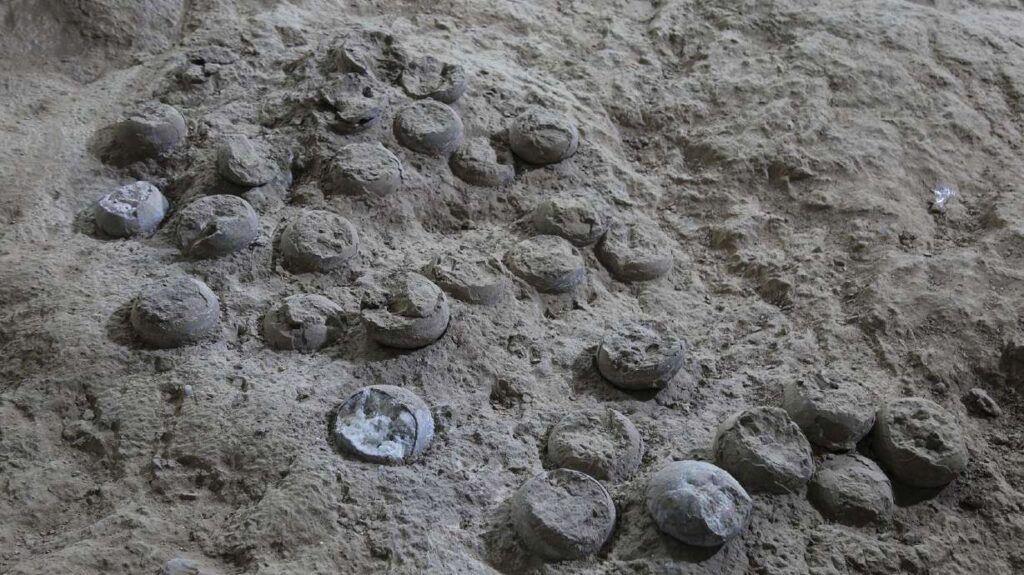Scientists have discovered 28 dinosaur eggs, approximately 86 million years old, in China’s Bluehorn Fossil Reserve. Using uranium-lead (U-PB) dating techniques, researchers analyzed the eggs’ fossilized shells, determining their age and offering insights into how dinosaurs adapted to a cooler climate in the Yunyang Basin.
The eggs, identified as belonging to the Placoolithus tumiaolingensis species, are slightly flattened spheres measuring 4.7-6.7 inches long with thin, porous mineralized shells. This porosity could provide clues about the ancient ecosystem during the Cretaceous period.
U-PB dating is a sophisticated method for dating carbonate minerals, relying on a comparison of uranium and lead isotopes within the fossils. Although this method is not yet widely used for fossil analysis, its application to these eggs is a significant step toward understanding dinosaur nesting behavior and evolutionary adaptations.
The Bluehorn site, containing over 3,000 eggs, offers a rare glimpse into Cretaceous dinosaurs, and successful application of U-PB dating here could improve knowledge of dinosaur breeding behavior globally.
Source link


